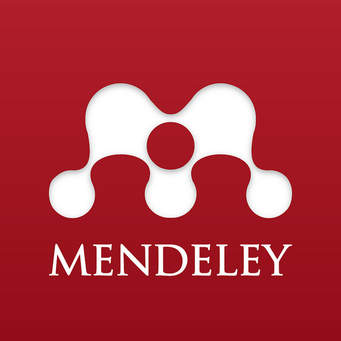Tingkat Pengetahuan Ibu Dengan Konsumsi Kalsium Dan Status Gizi Anak SDN 2 Ampenan Kecamatan Sekarbela
Abstract
Full Text:
PDFReferences
Almatsier, Sunita. 2010. Prinsip Dasar Ilmu Gizi. Gramedia. Jakarta. Hal : 233-243.
Badan Akreditasi Nasional. 2012. Badan Akreditasi Propinsi Sekolah/Madrasah Provinsi NTB, SDN 2 Ampenan. www.ban.com. Hal : 1-2. Diunduh 01/11/2013.
Cynthia, Adisty Anggraeni. 2012. Asuhan Gizi Nutritional Care Process. Graha Ilmu. Jakarta. Hal : 16-19.
Damanik, Harry. 2010. Pola Makan Dan Status Gizi Anak Sekolah Dasar Di Desa Perbukitan Dan Desa Tepi Danau Kecamatan Pangururan Kabupaten Samosir, 2010. Skripsi Fakultas Kesehatan Masyarakat Universitas Sumatera Utara, Medan. Hal : 7-8. Diunduh 22/09/2013.
Damar. 2011. Faktor-Faktor Yang Mempengaruhi Pengetahuan. http:damar.bogspot. Hal : 1. Diunduh 01/07/2014.
Departemen Gizi dan Kesehatan Masyarakat. Fakultas Kesehatan Masyarakat Universitas Indonesia. 2009. Gizi Dan Kesehatan Masyarakat. Rajawali Pers. Jakarta. Hal : 180-182.
Direktorat Jenderal Peternakan dan Kesehatan Hewan. Kementerian Pertanian Republik Indonesia, Departemen Ketahanan Pangan. 2013. Tingkat Konsumsi Daging, Susu, dan Telur. www. deptan.go.id. Hal : 23-27. Diunduh 20/09/2013.
Fikawati, Sandra dkk. 2005. Faktor yang Berhubungan dengan Asupan Kalsium
pada Remaja di Kota Bandung. Skripsi Fakultas Kesehatan Masyaratkat Universitas Indonesia Jurusan Gizi Kesehatan Masyarakat. www.srcib.com. Hal : 27. Diunduh 02/08/2014.
Hapsari, Irma Budi. 2009. Abstrak Hubungan Tingkat Konsumsi Energi, Protein dan Zat Besi dengan Status Gizi Anak Sekolah Dasar Desa Mojolegi Kecamatan Teras Kabupaten Boyolali 2009. Skripsi Universitas Diponegoro. www.eprints.undip.ac.id. Hal : 01. Diunduh 01/08/2014.
Hasan, Iqbal. 2003. Pokok-Pokok Materi Statistik 1. Bumi Aksara. Jakarta. Hal : 227.
Inaya, Muntarina. 2013. Tingkat Pengetahuan Ibu tentang Kebutuhan Gizi pada Anak Usia Toodler (1-3 Tahun) di Kelompok Bermain Sekar Melati Papahan Tasikmadu Tahun 2013. Karya Tulis Ilmiah STIKes Kusuma Husada Surakarta. www.srcib.com. Hal : 3. Diunduh 01/08/2014.
Istibisyarah, Istib. 2011. Umur Merupakan Salah Satu Faktor Yang Mempengaruhi Perilaku Kesehatan. www.srcib.com. Hal : 1-4. Diunduh 01/08/2014.
Kartono, Djoko, dkk. 2012. PDF : Widyakarya Nasional Pangan dan Gizi X. Penyempurnaan Kecukupan Gizi Untuk Orang Indonesia, 2012. Hal : 8-9. www.wnpg.lipi.go.id. Diunduh 17/10/2013.
Laelatul, Dewi Badriah. 2011. Gizi Dalam Kesehatan Reproduksi. PT. Refika Aditama. Jakarta. Hal : 82, 86.
Laporan Riskesdas 2010. Prevalensi Status Gizi Anak Tinggi Badan Menurut Umur dan Indeks Masa Tubuh (IMT) Menurut Umur Anak Usia 6-12 Tahun dan Karakteristik Kepala Keluarga Responden Kategori Pendidikan. Hal : 45.
Marmi. 2013. Kesehatan Reproduksi. Pustaka Pelajar. Jakarta . Hal : 148-151
Mien, Mahmud. Hermana, dkk. 2008. Tabel Komposisi Pangan Indonesia. Kompas Gramedia. Jakarta. Hal : 1, 8, 9, 21-22.
Notoatmodjo, Soekidjo. 2007. Promosi Kesehatan dan Ilmu Perilaku. PT.Rineka Cipta. Jakarta. Hal : 136-5137, 140-142.
Suciati, Laila. 2008. Hubungan Pengetahuan Ibu Tentang Kalsium dan Frekuensi Konsumsi Kalsium Serta Asupannya dengan Status Gizi Anak Usia 4-6 Tahun di Tk Islam Al-Husna Bekasi. Skripsi Fakultas Kesehatan Masyarakat Universitas Indonesia. Hal. 1-4. www.digilib.unimus.ac.id. Diunduh 21/09/2013
Suhardjo. 1989. Sosio Budaya Gizi. Departemen Pendidikan dan Kebudayaan Direktorat Jenderal Pendidikan Tinggi Pusat Antar Universitas Pangan Dan Gizi Insistut Pertanian Bogor. Hal 27-29, 188, 212.
Supariasa, Bachyar Bakri, dan Ibnu Fajar. 2001. Penilaian Status Gizi. EGC. Jakarta. Hal : 27, 60-61, 94-95.
DOI: https://doi.org/10.32807/jgp.v1i1.73
Refbacks
- There are currently no refbacks.
Copyright (c) 2019 Jurnal Gizi Prima

This work is licensed under a Creative Commons Attribution-ShareAlike 4.0 International License.
Address:
Jurnal Gizi Prima (Prime Nutrition Journal) 2656-2480 Kampus A Poltekkes Kemenkes Mataram, Jurusan Gizi, Jl. Praburangkasari Dasan Cermen Sandubaya Mataram.





